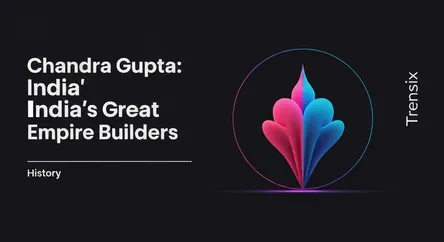History
Chandra Gupta: India's Great Empire Builders

Uncover the legacies of the legendary emperors named Chandra Gupta who founded and expanded two of the most powerful empires in ancient Indian history.
What is it?
The name Chandra Gupta refers to several highly influential rulers in Indian history. The most prominent are Chandragupta Maurya, founder of the Mauryan Empire, and two emperors of the Gupta Dynasty, Chandragupta I and Chandragupta II. Chandragupta Maurya (reigned c. 321-297 BCE), with the aid of his advisor Chanakya, overthrew the Nanda dynasty to establish the first pan-Indian empire. Centuries later, Chandragupta I (reigned c. 320-335 CE) founded the Gupta Empire, which is often regarded as India's golden age. His grandson, Chandragupta II (reigned c. 380-415 CE), expanded the Gupta Empire to its peak.
Why is it trending?
These historical figures are trending due to their profound and lasting impact on Indian civilization and governance. Chandragupta Maurya's epic rise to power and his success in unifying the subcontinent and repelling Greek forces remains a celebrated chapter in history. The Gupta period, especially under Chandragupta II, is renowned for its remarkable achievements in science, art, and literature. His court is famously associated with the "Navaratnas" (Nine Gems), a group of exceptional scholars, including the poet Kalidasa. These reigns symbolize periods of strength, prosperity, and immense cultural and intellectual output, making them a perennial topic of interest.
How does it affect people?
The legacies of the Chandra Guptas have shaped modern India. Chandragupta Maurya's centralized administrative system provided a model for future Indian kingdoms. The political unity he forged created a sense of a consolidated Indian state for the first time. The Gupta Empire's contributions fundamentally influenced global culture and science; advancements in mathematics and astronomy during this era are particularly noteworthy. The peace and prosperity under their rule allowed for a cultural renaissance that defined classical Indian art, architecture, and philosophy, forming a cornerstone of India's cultural heritage today.